Service Alert
July 1 - Canada Day
CELA will be closed on Tuesday, July 1st for Canada Day. Our office will reopen and our Contact Centre services will resume on Wednesday, July 2nd. Enjoy your holiday!
CELA will be closed on Tuesday, July 1st for Canada Day. Our office will reopen and our Contact Centre services will resume on Wednesday, July 2nd. Enjoy your holiday!
Showing 1 - 20 of 10367 items
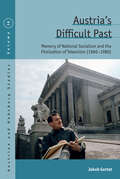
The role played by film in reshaping Austria’s post-war national identity is often studied within narrow historical and geographical margins.…
Film history traditionally focuses on either the work of a sole director, German cinematography, or the immediate aftermath of World War II, and neglects the link that exists between historical television films and Austria’s distinct culture of remembrance. In Austria’s Difficult Past, Jakub Gortat addresses this gap by providing a comprehensive analysis of television films produced by Austrian (ORF) and German television studios between 1961 and 1980. In doing so, he explores the way films mediated the burden of memory and the legacy of Austria’s complicity in the Nazi regime.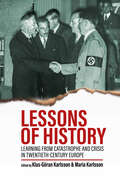
By Klas-Göran Karlsson and Maria Karlsson. 2025
Historical lessons are useful or even necessary for our guidance and orientation in time. These lessons, however, have often been…
overlooked in historical reflections on watershed moments, such as genocides, treaties, and global movements. Focusing on how cataclysmic events, primarily within Central and Eastern Europe, have been transmitted across borders and generations, this volume interrogates how the theory of historical lessons has evolved, ultimately providing a useful framework for understanding contemporary conflicts and issues. Spanning topics from the mediation of history within film to the influence of historical oppression on student activism, this volume re-evaluates historiography’s potential for analyzing the past and engaging with the present.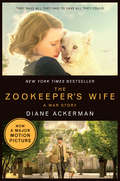
By Diane Ackerman. 2007
The New York Times bestseller now a major motion picture starring Jessica Chastain. 1939: the Germans have invaded Poland. The…
keepers of the Warsaw zoo, Jan and Antonina Zabinski, survive the bombardment of the city, only to see the occupiers ruthlessly kill many of their animals. The Nazis then carry off the prized specimens to Berlin for their program to create the “purest” breeds, much as they saw themselves as the purest human race. Opposed to all the Nazis represented, the Zabinskis risked their lives by hiding Jews in the now-empty animal cages, saving as many as three hundred people from extermination. Acclaimed, best-selling author Diane Ackerman, fascinated both by the Zabinskis’ courage and by Antonina’s incredible sensitivity to all living beings, tells a moving and dramatic story of the power of empathy and the strength of love. A Focus Features release, it is directed by Niki Caro, written by Angela Workman.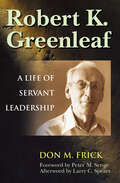
By Don M. Frick. 2004
Thousands if not millions of people have heard the term “servant leadership,” introduced by Robert K. Greenleaf in his landmark…
essay The Servant as Leader, published in 1970. There are now Centers for Servant Leadership in ten countries and counting. His work is regularly cited by some of the most prominent business writers and leaders in the world, such as Ken Blanchard, Stephen Covey, Peter Senge, Margaret Wheatley, and Peter Block. And yet until now there has been no biography of the man who first developed this revolutionary idea. Don Frick was given unfettered access to all of Greenleaf’s papers and correspondence. The result is a fascinating book that details the sources of Greenleaf’s thought, describes his friendships with dozens of well-known people, and shows how he influenced business history well before his first book was published at the age of 73, and lived his own life as a servant leader. As Director of Management Research at AT&T for 38 years, Greenleaf was known as “AT&T’s Kept Revolutionary.” Among other unusual initiatives, he oversaw a novel program which taught executive decision making through great literature, established the first corporate assessment center using knowledge gleaned from the OSS’s approach to training civilian spies during World War II, and invited leading philosophers and theologians to have conversations with AT&T executives. After a period of soul searching and some surprising experiments in consciousness, Greenleaf retired from AT&T and began to develop the concept of servant leadership, the then-heretical notion that leaders lead best by serving their followers rather than “commanding” them. He continued to promote the idea through teaching, writing, and consulting until his last years, and was instrumental in creating a score of important organizations such as The Center for Creative Leadership and Yokefellow Institute. Always, Greenleaf was a seeker opening himself up to novel experiences and astonishing people. He was a complex person—an introvert who served in public roles, a wise person who refused to give others “The Answer,” a brilliant thinker who often declared, “I am not a scholar.” His grave carries the epitaph he wrote for himself: “Potentially a good plumber; ruined by a sophisticated education.”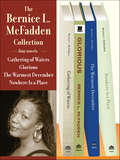
By Bernice L. McFadden. 2015
The Bernice L. McFadden Collection features four novels from the three-time Hurston/Wright Legacy Award finalis "McFadden works a kind of…
miracle--not only do her characters retain their appealing humanity; their story eclipses the bonds of history to offer continuous surprises." --New York Times, on Gathering of Waters "Riveting...so nicely avoids the sentimentality that swirls around the subject matter. I am as impressed by its structural strength as by the searing and expertly imagined scenes." --Toni Morrison, on The Warmest December "McFadden's lively and loving rendering of New York hews closely to the jazz-inflected city of myth....McFadden has a wonderful ear for dialogue, and her entertaining prose equally accommodates humor and pathos." --New York Times, on Glorious "An engrossing multigenerational saga...With her deep engagement in the material and her brisk but lyrical prose, McFadden creates a poignant epic of resiliency, bringing Sherry to a well-earned awareness of her place atop the shoulders of her ancestors, those who survived so that she might one day, too." --Publishers Weekly, on Nowhere Is a PlaceThe Bernice L. McFadden Collection features four novels from the three-time Hurston/Wright Legacy Award finalist: Gathering of Waters (a New York Times Editors’ Choice and one of the 100 Notable Books of 2012), Glorious (2010), Nowhere Is a Place (2006), and The Warmest December (2001).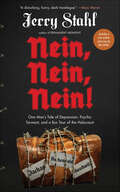
Now in paperback and featuring an interview with Ben Stiller; a guided group tour to concentration camps allows Stahl to…
confront personal and historical demons with both deep despair and savage humorIN SEPTEMBER 2016, JERRY STAHL was feeling nervous on the eve of a two-week trip across Poland and Germany. But it was not just the stops at Auschwitz, Buchenwald, and Dachau that gave him anxiety. It was the fact that he would be traveling with two dozen strangers, by bus. In a tour group. And he was not a tour-group kind of guy.The decision to visit Holocaust-world did not come easy. Stahl’s lifelong depression at an all-time high, his career and personal life at an all-time low, he had the idea to go on a trip where the despair he was feeling—out-of-control sadness, regret, and fear, not just for himself, but for the entire United States—would be appropriate. And where was despair more appropriate than the land of the Six Million?Seamlessly weaving global and personal history, through the lens of Stahl’s own bent perspective, Nein, Nein, Nein! stands out as a triumph of strange-o reporting, a tale that takes us from gang polkas to tourrash to the truly disturbing snack bar at Auschwitz. Strap in for a raw, surreal, and redemptively hilarious trip. Get on the bus.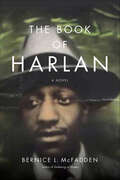
By Bernice L. McFadden. 2016
During WWII, two African American musicians are captured by the Nazis in Paris and imprisoned at the Buchenwald concentration camp.“Simply…
miraculous . . . As her saga becomes ever more spellbinding, so does the reader’s astonishment at the magic she creates. This is a story about the triumph of the human spirit over bigotry, intolerance and cruelty, and at the center of The Book of Harlan is the restorative force that is music.” —Washington Post“McFadden’s writing breaks the heart—and then heals it again. The perspective of a black man in a concentration camp is unique and harrowing and this is a riveting, worthwhile read.” —Toronto StarThe Book of Harlan opens with the courtship of Harlan’s parents and his 1917 birth in Macon, Georgia. After his prominent minister grandfather dies, Harlan and his parents move to Harlem, where he eventually becomes a professional musician. When Harlan and his best friend, trumpeter Lizard Robbins, are invited to perform at a popular cabaret in the Parisian enclave of Montmartre—affectionately referred to as “The Harlem of Paris” by black American musicians—Harlan jumps at the opportunity, convincing Lizard to join him.But after the City of Light falls under Nazi occupation, Harlan and Lizard are thrown into Buchenwald—the notorious concentration camp in Weimar, Germany—irreparably changing the course of Harlan’s life. Based on exhaustive research and told in McFadden’s mesmeric prose, The Book of Harlan skillfully blends the stories of McFadden’s familial ancestors with those of real and imagined characters.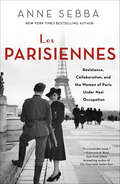
The New York Times–bestselling author explores WWII Paris history and tells the stories of how women survived—or didn’t—during the Nazi…
occupation.Paris in the 1940s was a place of fear, power, aggression, courage, deprivation, and secrets. During the occupation, the swastika flew from the Eiffel Tower and danger lurked on every corner. While Parisian men were either fighting at the front or captured and forced to work in German factories, the women of Paris were left behind where they would come face to face with the German conquerors on a daily basis, as waitresses, shop assistants, or wives and mothers, increasingly desperate to find food to feed their families as hunger became part of everyday life.When the Nazis and the puppet Vichy regime began rounding up Jews to ship east to concentration camps, the full horror of the war was brought home and the choice between collaboration and resistance became unavoidable. Sebba focuses on the role of women, many of whom faced life and death decisions every day. After the war ended, there would be a fierce settling of accounts between those who made peace with or, worse, helped the occupiers and those who fought the Nazis in any way they could.“Anne Sebba has the nearly miraculous gift of combining the vivid intimacy of the lives of women during The Occupation with the history of the time. This is a remarkable book.” —Edmund de Waal, New York Times–bestselling author“Wonderfully researched . . . puts women’s stories, and the complications of their lives under Occupation, centre stage.” —Kate Mosse, New York Times–bestselling author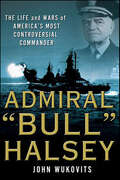
By John Wukovits. 2010
The definitive biography of America's best-known naval officer, who commanded the legendary fast carrier force during WWII.From the tragic aftermath…
of Pearl Harbor, when he fashioned America's first response to the attack, to the war's final day in Tokyo Bay when he witnessed Japan's surrender, Admiral William F. Halsey stamped a mighty imprint on the Pacific during World War II. He led or participated significantly in the Navy's first offensive strikes against the Marshall Islands and Wake Island, the Guadalcanal campaign, and the offensive toward Japan. As a commander, he never shied from engaging the enemy, but boldly entered into battle, ready for a fight. As a consequence, Halsey became the face of the Navy and its most attractive public relations phenomenon. Due to his bold tactics and quotable wit, Halsey continues to be a beloved and debated figure.In this balanced biography, historian John Wukovits illuminates the life of a man who ultimately deserves recognition as one the great naval commanders in U.S. history. Europe had Patton; the Pacific had Admiral William "the Bull" Halsey.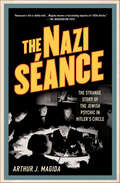
By Arthur J. Magida. 2001
World War I left Berlin, and all of Germany, devastated. Charlatans and demagogues eagerly exploited the desperate crowds. Fascination with…
the occult was everywhere – in private séances, personalized psychic readings, communions with the dead – as people struggled to escape the grim reality of their lives. In the early 1930s, the most famous mentalist in the German capital was Erik Jan Hanussen, a Jewish mind reader originally from Vienna who became so popular in Berlin that he rubbed elbows with high ranking Nazis, became close with top Storm Troopers, and even advised Hitler. Called "Europe's Greatest Oracle Since Nostradamus," Hanussen assumed he could manipulate some of the more incendiary personalities of his time just as he had manipulated his fans. He turned his occult newspaper in Berlin into a Nazi propaganda paper, personally assured Hitler that the stars were aligned in his favor, and predicted the infamous Reichstag Fire that would solidify the Nazis' grip on Germany. Seasoned with ruminations about wonder and magic (and explanations of Hanussen's tricks), The Nazi Séance is a disturbing journey into a Germany as it descends into madness—aided by a "clairvoyant" Jew oblivious to the savagery of men who pursued a Reich they fantasized would last 1,000 years.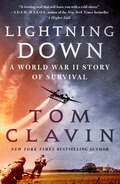
By Tom Clavin. 2021
An American fighter pilot doomed to die in Buchenwald but determined to survive.On August 13, 1944, Joe Moser set off…
on his forty-fourth combat mission over occupied France. Soon, he would join almost 170 other Allied airmen as prisoners in Buchenwald, one of the most notorious and deadly of Nazi concentration camps. Tom Clavin's Lightning Down tells this largely untold and riveting true story.Moser was just twenty-two years old, a farm boy from Washington State who fell in love with flying. During the War he realized his dream of piloting a P-38 Lightning, one of the most effective weapons the Army Air Corps had against the powerful German Luftwaffe. But on that hot August morning he had to bail out of his damaged, burning plane. Captured immediately, Moser’s journey into hell began.Moser and his courageous comrades from England, Canada, New Zealand, and elsewhere endured the most horrific conditions during their imprisonment... until the day the orders were issued by Hitler himself to execute them. Only a most desperate plan would save them.The page-turning momentum of Lightning Down is like that of a thriller, but the stories of imprisoned and brutalized airmen are true and told in unforgettable detail, led by the distinctly American voice of Joe Moser, who prays every day to be reunited with his family.Lightning Down is a can’t-put-it-down inspiring saga of brave men confronting great evil and great odds against survival.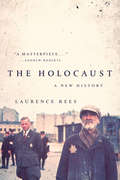
By Laurence Rees. 2017
&“This is by far the clearest book ever written about the Holocaust, and also the best at explaining its origins…
and grotesque mentality, as well as its chaotic development.&”―Antony Beevor, bestselling author of Stalingrad Laurence Rees has spent twenty-five years meeting survivors and perpetrators of the Holocaust. Now, he combines their never-before-seen eyewitness testimony with the latest academic research to create a uniquely accessible and authoritative account of the Holocaust. In The Holocaust, Rees offers an examination of the decision-making process of the Nazi state, and in the process reveals the series of escalations that cumulatively created the horror. He argues that while hatred of the Jews was always at the epicenter of Nazi thinking, what happened cannot be fully understood without considering the murder of the Jews alongside plans to kill large numbers of non-Jews, including the disabled, Sinti, and Roma, plus millions of Soviet civilians. Through a chronological, intensely readable narrative, featuring enthralling eyewitness testimony and the latest academic research, this is a compelling new account of the worst crime in history.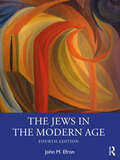
By John Efron. 2025
Providing a broad as well as a pointillist overview of modern Jewish history on a global scale from the eighteenth…
century to the present day, this book analyzes how the Jewish people have been dramatically transformed by the forces of social, economic, political, technological, and demographic change.Now in a new edition as a split volume, this second volume of a comprehensive history of the Jews includes topics such as the impact on Jewish society of the Enlightenment as well as its Jewish equivalent, the Haskalah; religious innovations in eastern and central Europe; the processes of emancipation and Jewish acculturation; the modern economic history of the Jewish people, which includes their embourgeoisement in central and western Europe, and the growth of a giant Jewish proletariat in eastern Europe; the emergence of an antisemitic politics that sought to roll back Jewish gains; and the variety of Jewish responses to those illiberal forces, especially in the form of vibrant Jewish political cultures, among them Zionism, socialism, and mass migration. Middle Eastern Jewish communities were likewise impacted by the forces of modernity in ways particular to them, and that history is addressed, as is the emergence and consolidation of the state of Israel in the wake of the Holocaust and the dissolution of Jewish communities across the Muslim world. Currently, illiberal forces are again on the march from both the right and the left, helping to foster a global upsurge of antisemitic violence and online hate.The book is useful not just for those interested in the Jews themselves but also for readers open to learning about global history from the vantage point of an ethnic minority deeply impacted by modernity, both its blessings as well as its horrors.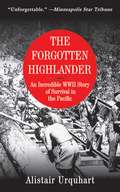
By Alistair Urquhart. 2010
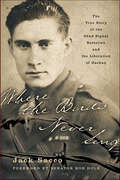
"In this riveting book, Jack Sacco tells the realistic, harrowing, at times horrifying, and ultimately triumphant tale of an American…
GI in World War II as seen through the eyes of his father, Joe Sacco--farm boy from Alabama who was flung into the chaos of Normandy and survived the terrors of the Bulge. As part of the 92nd Signal Battalion and Patton's famed Third Army, Joe and his buddies found themselves at the forefront of the Allied push through France and Germany. After more than a year of fighting, but still only twenty years old, Joe had become a hardened veteran. Yet nothing could have prepared him and his unit for the horrors behind the walls of Germany's infamous Dachau concentration camp. They were among the first 250 American troops into the camp, and it was there that they finally grasped the significance of the Allied mission...." -- Provided by publisher
By Carolyn Porter. 2017
A graphic designer's search for inspiration leads to a cache of letters and the mystery of one man's fate during…
World War II. Seeking inspiration for a new font design in an antique store in small-town Stillwater, Minnesota, graphic designer Carolyn Porter stumbled across a bundle of letters and was immediately drawn to their beautifully expressive pen-and-ink handwriting. She could not read the letters they were in French but she noticed all of them had been signed by a man named Marcel and mailed from Berlin to his family in France during the middle of World War II. As Carolyn grappled with designing the font, she decided to have one of Marcel's letters translated. Reading words of love combined with testimony of survival inside a labor camp transformed Carolyn's curiosity into an obsession to find out whether he ever returned to his beloved wife and daughters after the war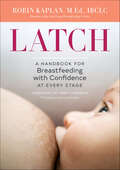
By Robin Kaplan. 2018
Latch is a judgment-free guide to breastfeeding that will teach you exactly what you need to know to meet your…
own personal breastfeeding goals.Early motherhood is a time of great joy. It can also be filled with new stressors—chief among them: breastfeeding. In Latch: A Handbook for Breastfeeding with Confidence at Every Stage, International Board-Certified Lactation Consultant, Robin Kaplan, addresses specific breastfeeding concerns, allowing you to feel empowered while breastfeeding and overcome challenges as they arise. After working with countless mothers who have felt unique in their breastfeeding challenges, and as the mother of two who overcame breastfeeding challenges of her own, she knows how deeply personal breastfeeding is.Compassionate and supportive, Latch covers the most pressing topics at each stage of breastfeeding and will teach you to:Establish successful breastfeeding early on with attention to breastfeeding positions, latch, mom's wellbeing, milk supply, supplementation, and pumpingBreastfeed through lifestyle changes such as returning to work, transitioning to bottle-feeding, supplementation, reducing nighttime feedings, and introducing solidsWean your baby/toddler from breastfeeding including emotional preparation, reducing feedings, and guidance for when your child tries to nurse againComplete with breastfeeding stories from new moms, breastmilk storage guidelines, and resources for additional breastfeeding support Latch will be there for you, holding your hand, every step of the way.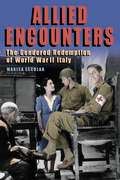
Honorable Mention for the 2019 American Association for Italian American Book Prize (20-21st Centuries)Allied Encounters uniquely explores Anglo-American and Italian…
literary, cinematic, and military representations of World War II Italy in order to trace, critique, and move beyond the gendered paradigm of redemption that has conditioned understandings of the Allied–Italian encounter. The arrival of the Allies’ global forces in an Italy torn by civil war brought together populations that had long mythologized one another, yet “liberation” did not prove to be the happy ending touted by official rhetoric. Instead of a “honeymoon,” the Allied–Italian encounter in cities such as Naples and Rome appeared to be a lurid affair, where the black market reigned supreme and prostitution was the norm. Informed by the historical context as well as by their respective traditions, these texts become more than mirrors of the encounter or generic allegories. Instead, they are sites in which to explore repressed traumas that inform how the occupation unfolded and is remembered, including the Holocaust, the American Civil War, and European colonialism, as well as individual traumatic events like the massacre of the Fosse Ardeatine and the mass civilian rape near Rome by colonial soldiers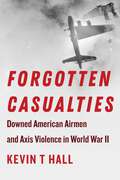
Sheds new light on the mistreatment of downed airmen during World War II and the overall relationship between the air…
war and state-sponsored violence.Throughout the vast expanse of the Pacific, the remoteness of Southeast Asia, and the rural and urban communities in Nazi-occupied Europe, more than 120,000 American airmen were shot down over enemy territory during World War II, thousands of whom were mistreated and executed. The perpetrators were not just solely fanatical soldiers or Nazi zealots but also ordinary civilians triggered by the death and devastation inflicted by the war. In Forgotten Casualties, author Kevin T Hall examines Axis violence inflicted on downed Allied airmen during this global war.Compared with all other armed conflicts, World War II exhibited the most widespread and ruthless violence committed against airmen. Flyers were deemed guilty because of their association with the Allied air forces, and their fate remained in the hands of their often-hostile captors. Axis citizens angered by the devastation inflicted by the war, along with the regimes’ consent and often encouragement of citizens to take matters into their own hands, resulted in thousands of Allied flyers’ being mistreated and executed by enraged civilians. Written to help advance the relatively limited discourse on the mistreatment against flyers in World War II, Forgotten Casualties is the first book to analyze the Axis violence committed against Allied airmen in a comparative, international perspective. Effectively comparing and contrasting the treatment of POWs in Germany with that of their counterparts in Japan, Hall’s thorough analysis of rarely seen primary and secondary sources sheds new light on the largely overlooked complex relationship among the air war, propaganda, the role of civilians, and state-sponsored terror during the radicalized conflict. Sources include postwar trial testimonies, Missing Air Crew Reports (MACR), Escape and Evasion reports, perpetrators’ explanations and rationalizations for their actions, extensive judicial sources, transcripts of court proceedings, autopsy reports, appeals for clemency, and justifications for verdicts.Drawing heavily on airmen’s personal accounts and the testimonies of both witnesses and perpetrators from the postwar crimes trials, Forgotten Casualties offers a new narrative of this largely overlooked aspect of Axis violence.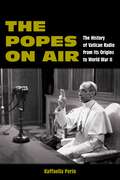
The story of the origin of Vatican Radio provides a unique look at the history of World War IIThe book…
offers the first wide-ranging study on the history of Vatican Radio from its origins (1931) to the end of Pius XII’s pontificate (1958) based on unpublished sources. The opening of the Secret Vatican Archives on the records regarding Pius XII will shed light on the most controversial pontificate of the 20th century. Moreover, the recent rearrangement of the Vatican media provided the creation of a multimedia archive that is still in Fieri.This research is an original point of view on the most relevant questions concerning these decades: the relation of the Catholic Church with the Fascist regimes and Western democracies; the attitude toward anti-Semitism and the Shoah in Europe, and in general toward the total war; the relationship of the Holy See with the new media in the mass society; the questions arisen in the after-war period such as the Christian Democratic Party in Italy; the new role of women; and anti-communism and the competition for the consensus in the social and moral order in a secularized society.